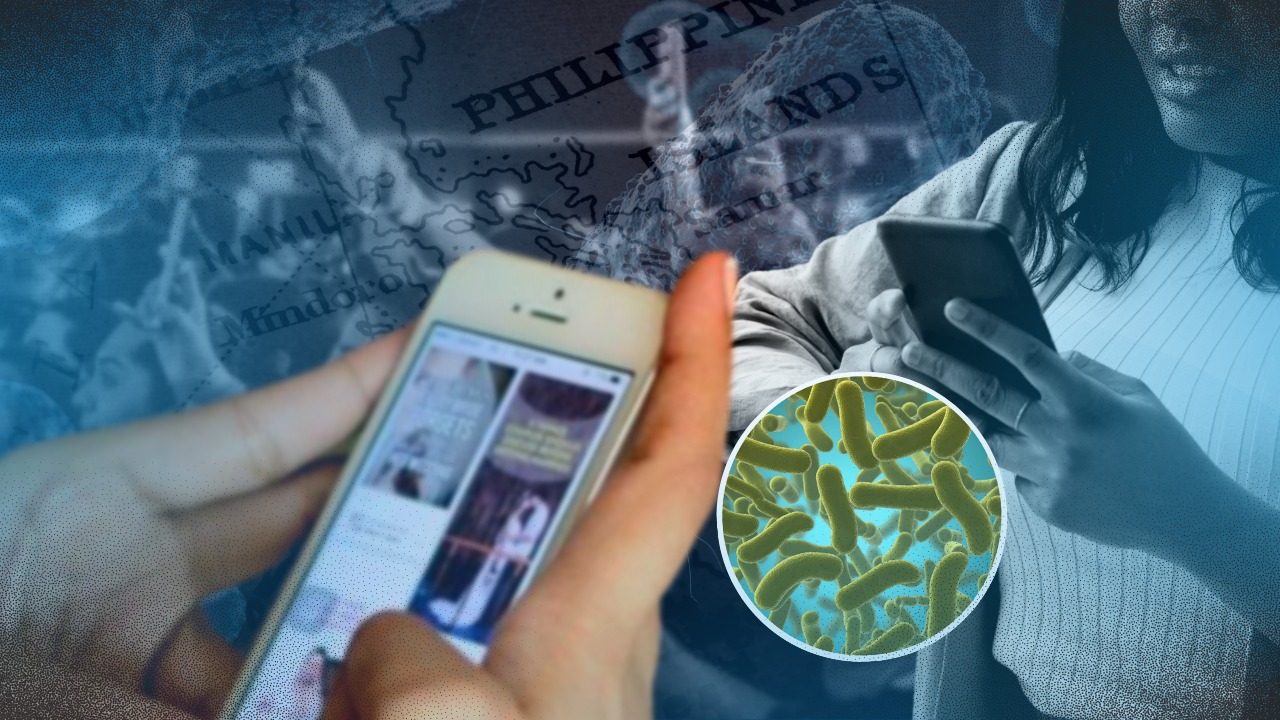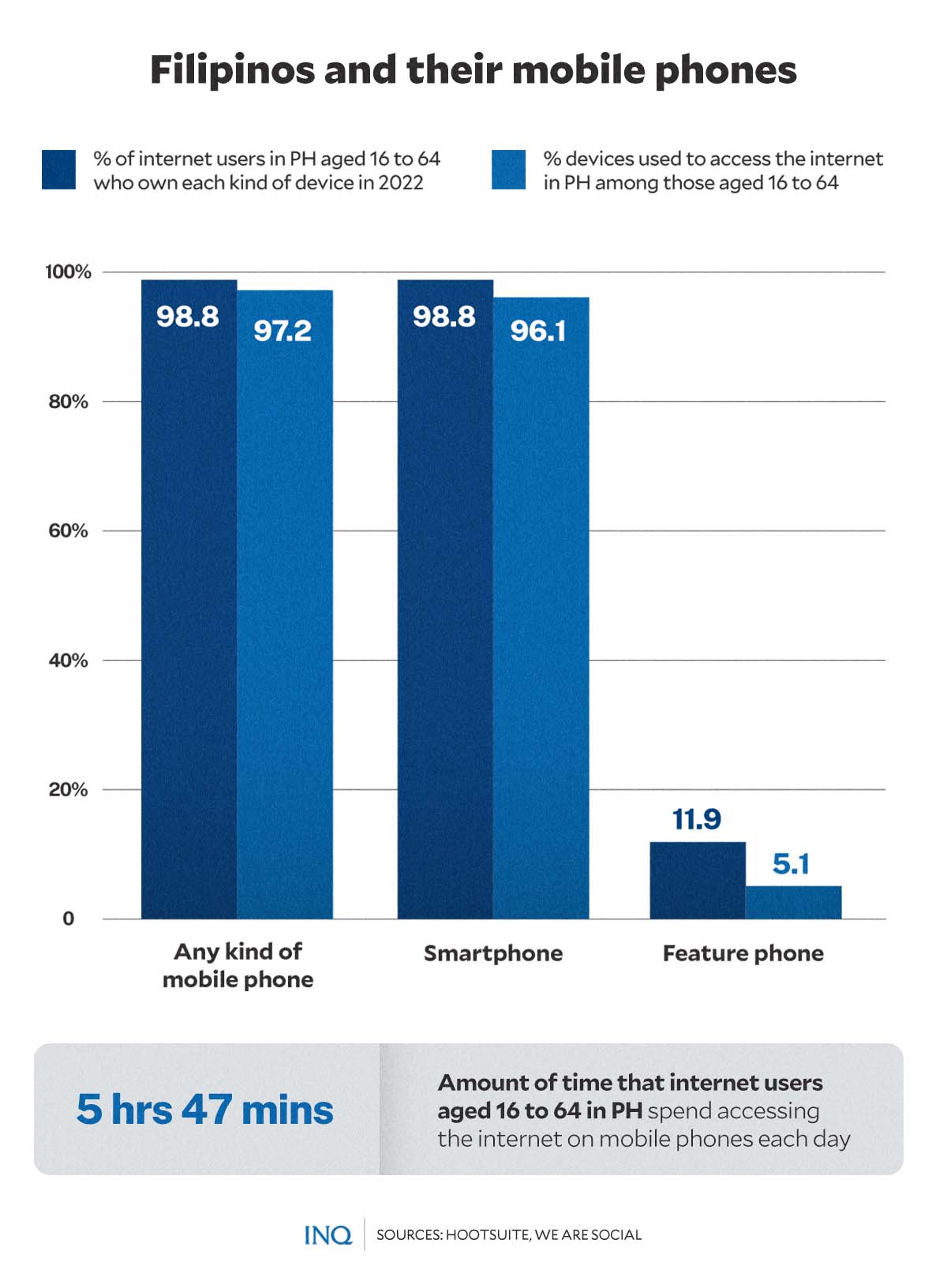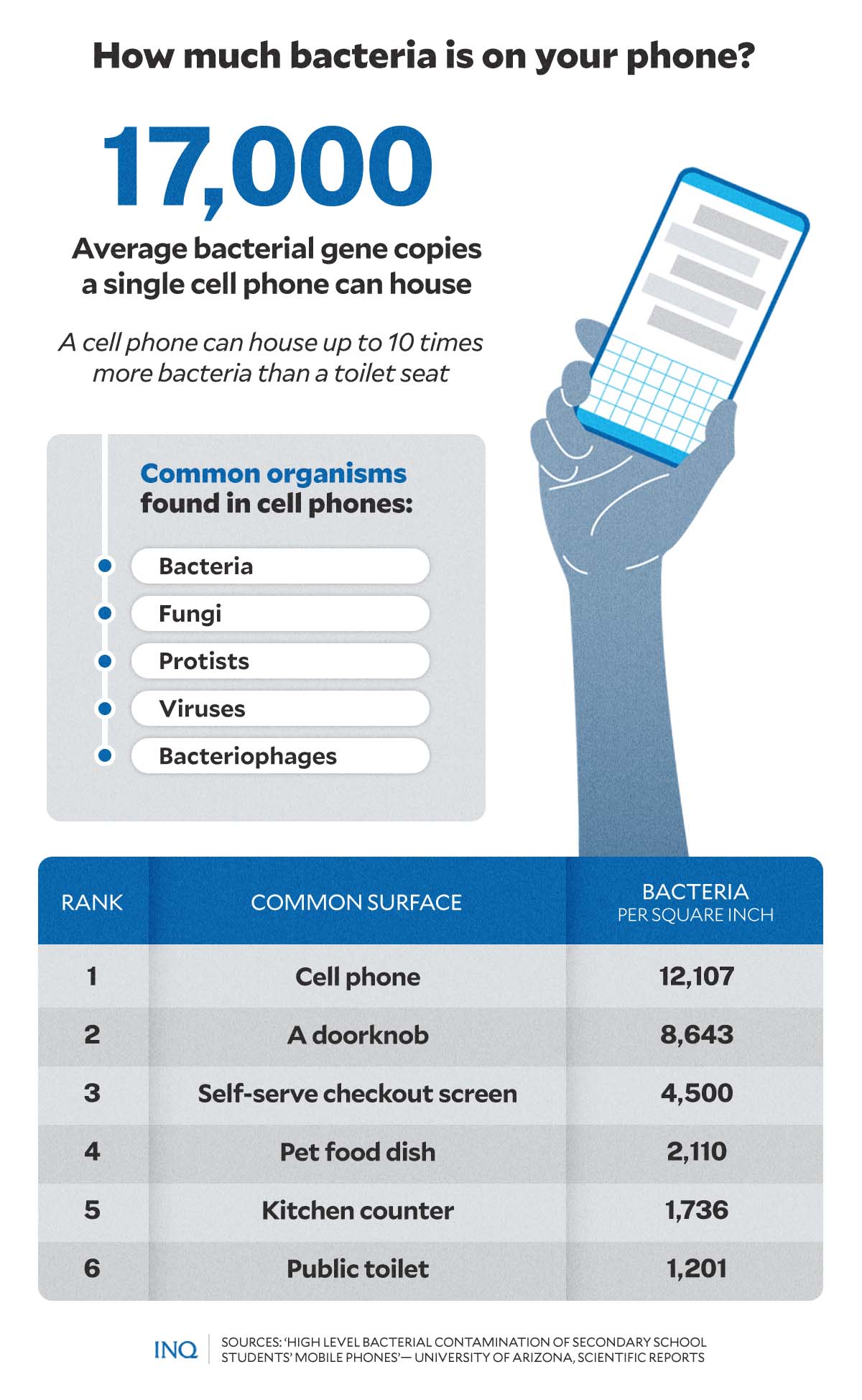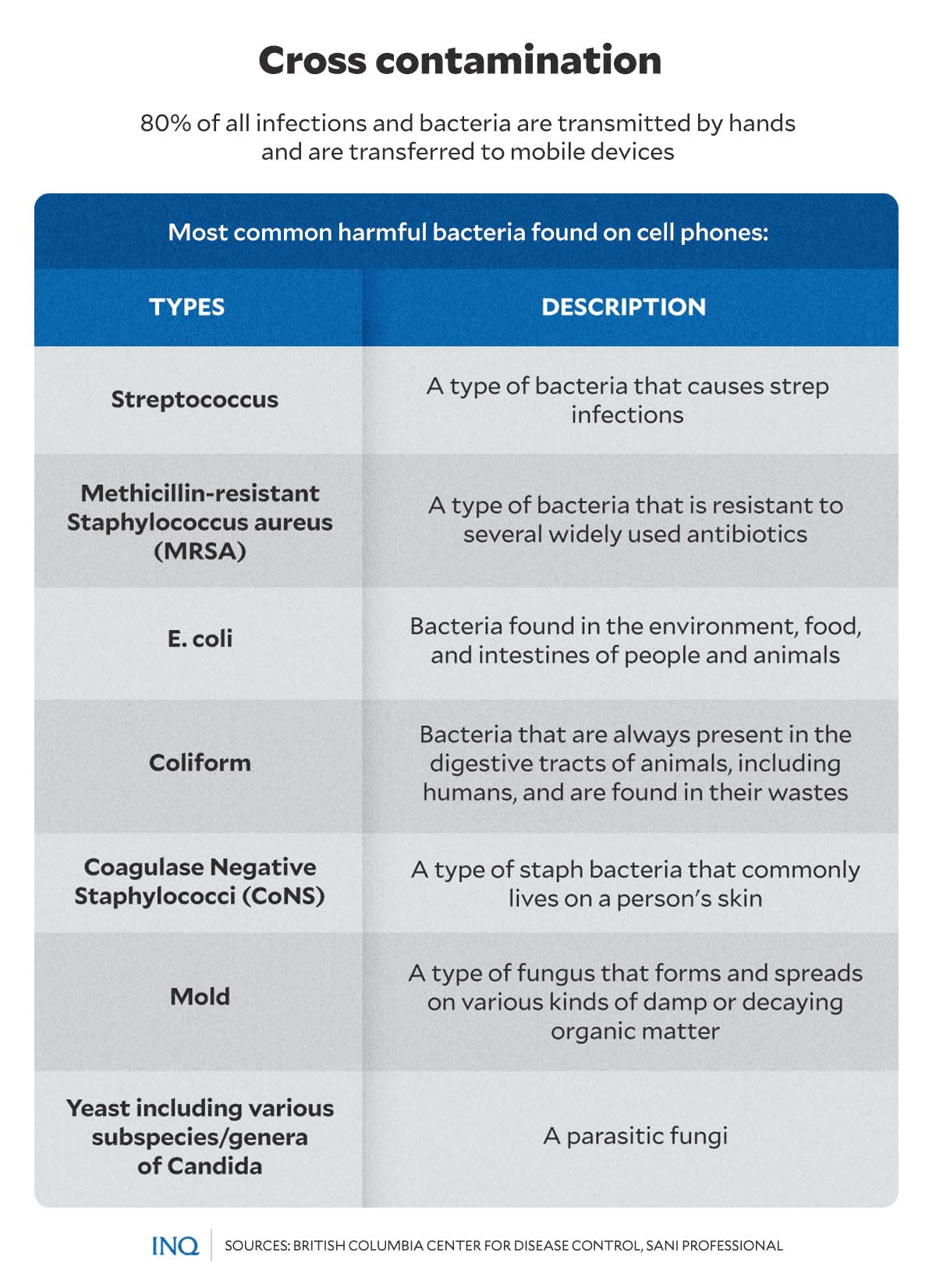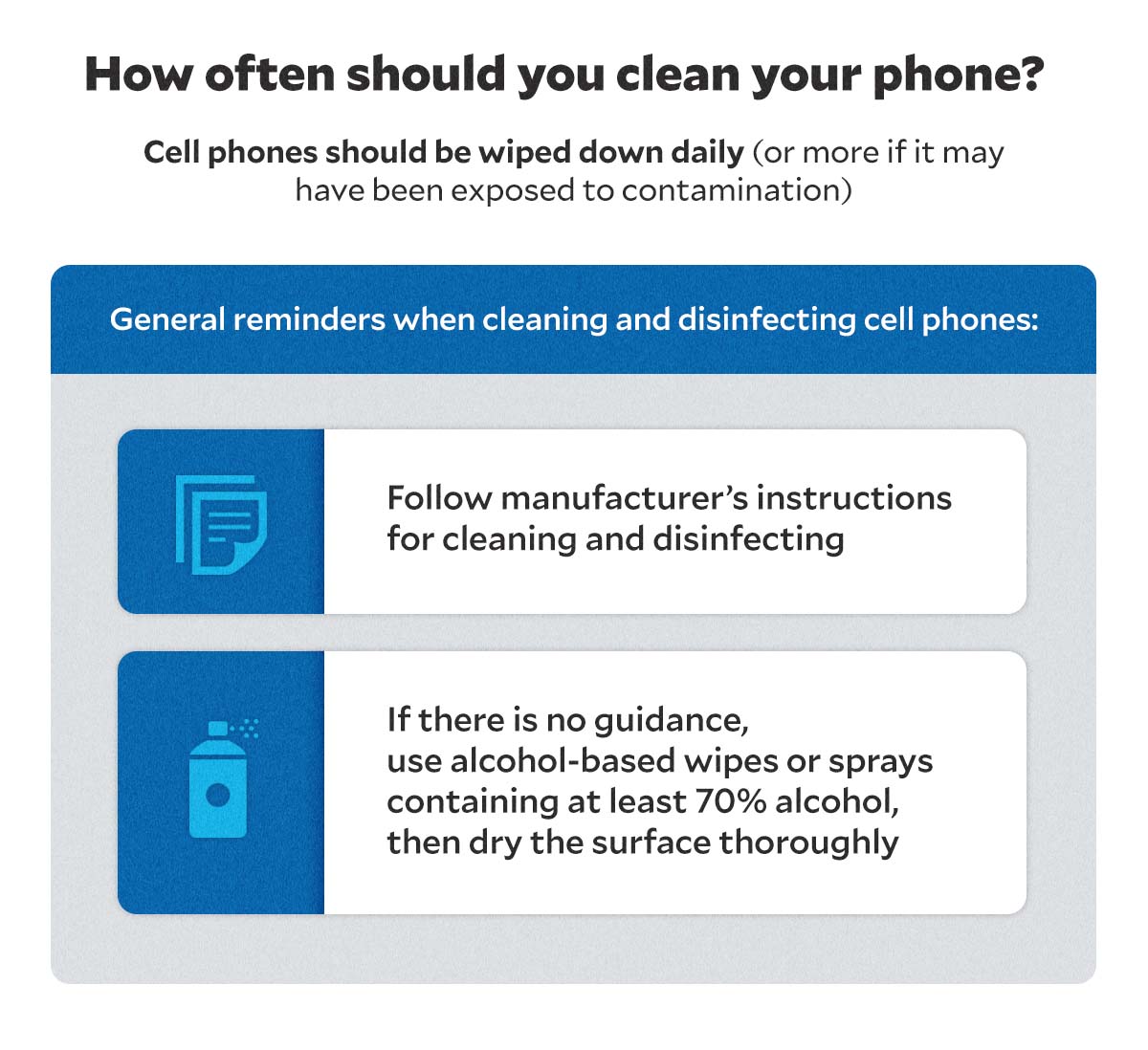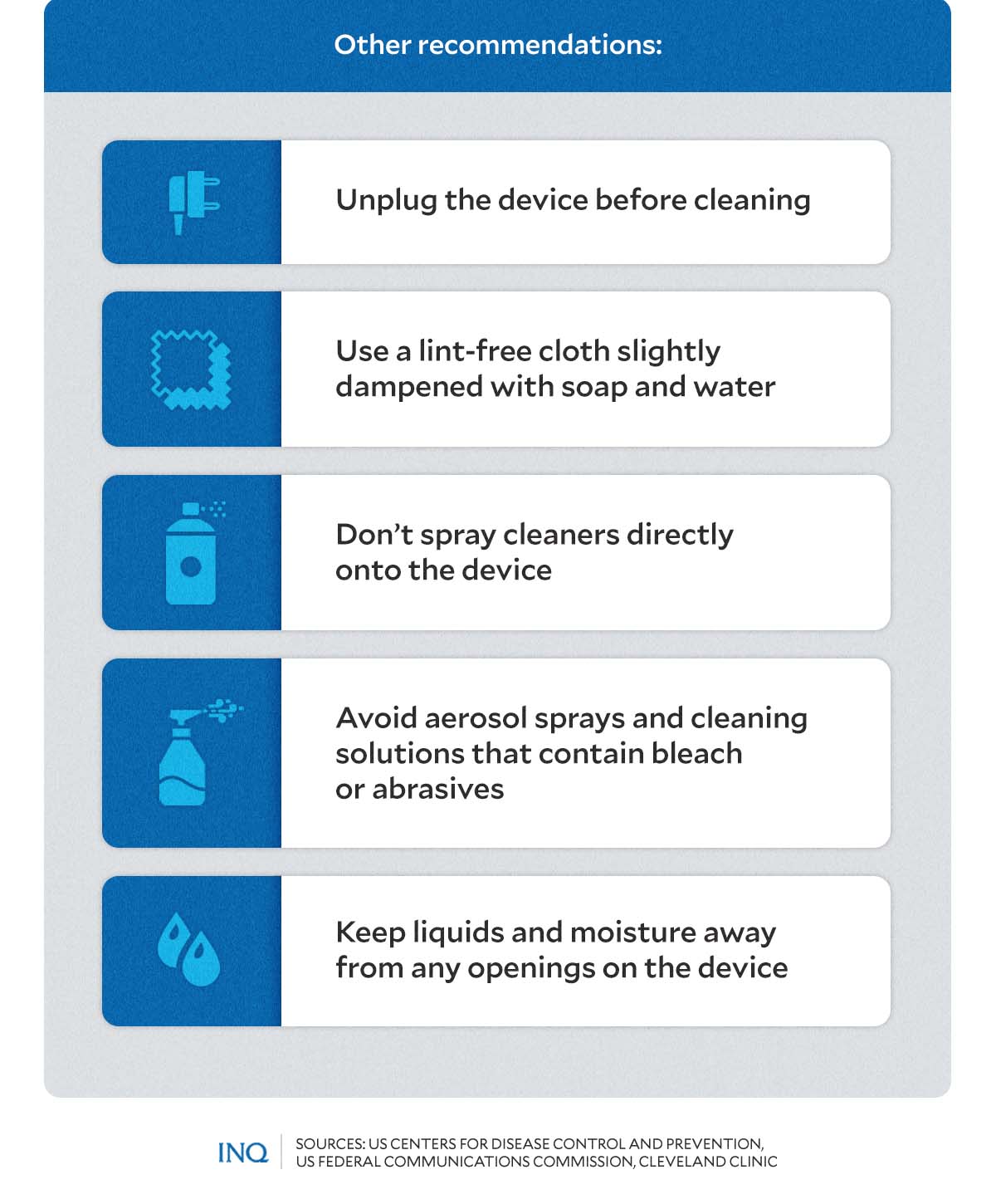Your phone can make you sick, literally. What to know, do
MANILA, Philippines—Worldwide, people spend most of their time using their mobile phones—scrolling through social media, watching videos, or communicating online. However, most fail to realize that mobile phones collect a lot of germs each day—and could become ten times dirtier than a toilet seat.
Social media management firm Hootsuite and creative agency We Are Social found that in the Philippines, 98.8 percent of internet users aged 16 to 64 own mobile phones. Around 98.8 percent own smartphones, while 11.9 percent own feature phones.
READ: PH social media craze: 77% of Filipinos more engaging online than in real life
On average, Filipinos spend 5 hours and 47 minutes each day using their mobile phones to surf the internet. That translates to up to 6 hours of touching mobile phones and bringing them everywhere.
Studies found that spending the same—or more—amount of time touching mobile phones and bringing them to potentially bacteria-prone places increase the risk of transferring germs, bacteria, and pathogens to the devices.
Mobile phones are covered in bacteria
A study by microbiologists at the University of Arizona found that mobile phones—considering the average amount of time a person spends each day handling those devices—make a breeding ground for germs and bacteria.
In fact, microbiologists stated that mobile phones carry ten times more bacteria than toilet seats—which, they explained, naturally get cleaned frequently since most people associate bathrooms with germs.
Among the most common microorganisms found in mobile phones are various bacteria, fungi, and viruses. A separate study published in 2017 showed that, on average, there are at least 17,000 bacterial gene copies on a mobile phone.
A previous report claimed that mobile phones carry more bacteria per square inch than other high-touch surfaces or places that are the common breeding grounds for bacteria.
Compared to mobile phones, which the article said could carry over 25,000 bacteria per square inch, a public toilet seat could only carry 1,201 bacteria per square inch. Other surfaces such as kitchen counters (1,736), pet food dish (2,110), and a doorknob (8,643) have lesser bacteria per square inch than mobile phones.
But how did this happen? How did those microorganisms end up in mobile phones?
According to US-based Northwestern Medicine Regional Medical Group, mobile phones pick up dirt, oil, and bacteria that people have on their skin. Every time people use their mobile phones, they transfer tiny microorganisms from their hands and fingers to their phone’s surface.
Mobile phones make you sick
Studies noted that while many types of bacteria commonly found in mobile phones are mostly harmless, some harmful pathogens may be transferred onto the surface of mobile phones and spread from person to person.
According to the British Columbia Center for Disease Control, 80 percent of all infections are transmitted by hand. As a result, bacteria are easily transferred to mobile devices.
When people hold their dirty phones to their face, the bacteria and other microorganisms enter the skin’s pores and cause minor skin breakouts. In some cases, dirty mobile phones could cause more serious conditions from harmful bacteria such as:
- Streptococcus—a type of bacteria that causes strep infections
- Methicillin-resistant Staphylococcus aureus (MRSA)—a type of bacteria resistant to several widely used antibiotics, making it difficult to treat
- E. coli—bacteria found in the environment, food, and intestines of people and animals
- Coliform—bacteria that are always present in the digestive tracts of animals, including humans, and are found in their wastes
- Coagulase Negative Staphylococci (CoNS)—a type of staph bacteria that commonly live on a person’s skin
- Mold—a type of fungus that forms and spreads on various kinds of damp or decaying organic matter
- Yeast, including various subspecies/genera of candida (parasitic fungi).
“Although the infectious dose of pathogens varies, it is still important that they don’t enter your system,” said US-based manufacturer Sani Professional.
“Also, once a person is infected, pathogens can spread from one person to another by sharing a phone. For instance, if a person was sick and coughed onto their phone while speaking on it, then handed it to someone else to use, the second person could be exposed,” it added.
Experts from the Northwestern Medicine Regional Medical Group warned that people with weaker immune systems—unlike healthy individuals—are more vulnerable to common bacteria that live on mobile phones.
Clean, sanitize, disinfect
To reduce the amount of microorganisms—such as bacteria, viruses, or pathogens—found on mobile phones, experts recommend applying different levels of cleaning on the devices. These, according to company Sani Professional, include:
- cleaning—to remove visible soil and debris from surfaces;
- sanitizing—to lessen the presence of any bacteria, virus, and fungi from the mobile phone’s surface
- disinfecting—to eliminate pathogens and disease-causing microorganisms
Amid the COVID-19 outbreak, the US Centers for Disease Control and Prevention (CDC) released a reminder on how to clean and disinfect electronic devices like mobile phones and touch screens.
The US CDC noted that mobile phone users should follow manufacturer’s instructions for cleaning and disinfecting. However, if there is no guidance, it suggested using alcohol-based wipes or sprays containing at least 70 percent alcohol—and then drying the surface thoroughly.
Other experts recommended the following steps when cleaning and disinfecting mobile phones:
- Unplug or turn off the device before cleaning or disinfecting.
- Use a soft, lint-free, waterproof, and dust-proof wipe, such as a camera lens wipe, to gently wipe the surface of the device.
- Lightly damp washcloth with soap and water.
- Avoid spraying cleaners directly onto the device.
- Avoid aerosol sprays and cleaning solutions that may contain bleach or abrasives.
- Prevent liquids and moisture from reaching and entering any openings on the device.
Dr. Dan Allan from the Cleveland Clinic suggested wiping down mobile phones daily or more if it may have been exposed to contamination.
“In addition to this, he recommends routinely cleaning all surfaces and objects that you come into contact with throughout the day — counters, doorknobs, refrigerator handles, remote controls, your computer keyboard, and even your keys,” the Cleveland Clinic said, citing Allan.
He also recommended starting with proper hand hygiene to prevent the spread of germs.
“Hand washing is always better than hand sanitizer – certain infections (like norovirus) are not killed by hand sanitizer and must be washed off,” he continued.
Aside from cleaning and disinfecting mobile phones and other sanitary measures, experts recommended restricting the use of mobile phones in areas where it can pick up microorganisms, such as:
- kitchens (commercial and residential)
- bathrooms
- dining tables
- doctor’s offices











